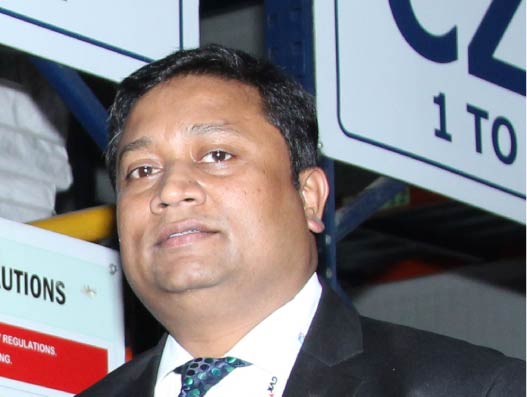
Maximum City aims for maximum cargo
As you walk through the cargo complex of the GVK Chhatrapati Shivaji International Airport (CSIA) the only expression you would have is WOW! For the record, in the year 2014-15, CSIA handled 694,261 tonnes of cargo. What you see may be chaotic but apparently there is order; to some extent perfect. Amidst the cacophony, we […]

As you walk through the cargo complex of the GVK Chhatrapati Shivaji International Airport (CSIA) the only expression you would have is WOW! For the record, in the year 2014-15, CSIA handled 694,261 tonnes of cargo. What you see may be chaotic but apparently there is order; to some extent perfect. Amidst the cacophony, we meet the man in charge of the cargo division of the airport. Manoj Singh, Vice President & Head of Cargo & Express at GVK MIAL in conversation with Lionel Alva and Reji John. Edited excerpts.
How has the year 2015 been for the cargo division of CSIA?
Indian exports remain uncertain due to weak global demand and slow growth in intra-Asia trade. However pharmaceutical exports and imports at the CSIA continue to rise despite market turbulence. The growth of pharma cargo has been massive in the last five years. As per independent reports, the export of merchandise from India registered its ninth straight month of decline in October 2015. We do not see this as a long-term trend and anticipate the volumes to pick up from the next fiscal. Import volumes at CSIA have been impressive compared to the previous year. We are currently almost five percent up on last year in terms of international cargo volumes.
What is the status of the MIAL’s cargo master plan and by when do you think you will complete it?
The implementation is in line with our planning. We are near 50 percent of what is set for the cargo master plan. The master plan encompasses completed projects like the Export Perishable Terminal, the Import Cold Zone, the Export Unitisation Terminal and upcoming projects like the Export Heavy and Bonded Cargo Terminal, the Domestic Common User Terminal as well as future projects like the expansion of the Export Perishable Terminal and the relocation of Air India to a new facility. We are thankful to the stakeholders and regulators for the support they have extended in this regard.
How aggressive are you to make MIAL as the first IATA CEIV certified pharmaceutical freight hub in India?
Pharmaceutical cargo has been our core commodity both in exports and imports. We have enhanced our cold chain capacity over the last four years to cater to this potential product. We think this is an area of our business that will continue to grow. MIAL has announced formation of a “Pharmaceutical Core Committee” during the CEIV workshop. We are in the process of forming the core group. The objective of this group is to improve the standards of the pharmaceutical air cargo supply chain. CEIV certification will definitely be one of the key action points.
What is your vision for the cargo division of the airport?
There are several: 100 percent e-freight compliance throughout the airport cargo transactions; India’s biggest air cargo hub with robust EDI and multimodal connectivity; Mumbai as Asia’s biggest trade lane for pharmaceutical export-import business; Potential transshipment hub on the global map; Industry-leading operational excellence; Customer-driven product handling.
How do you envisage the future of the air cargo market in India?
It is possible that we may see growth of 5-6 percent over the coming years with pharma cargo as the key driver.

